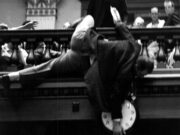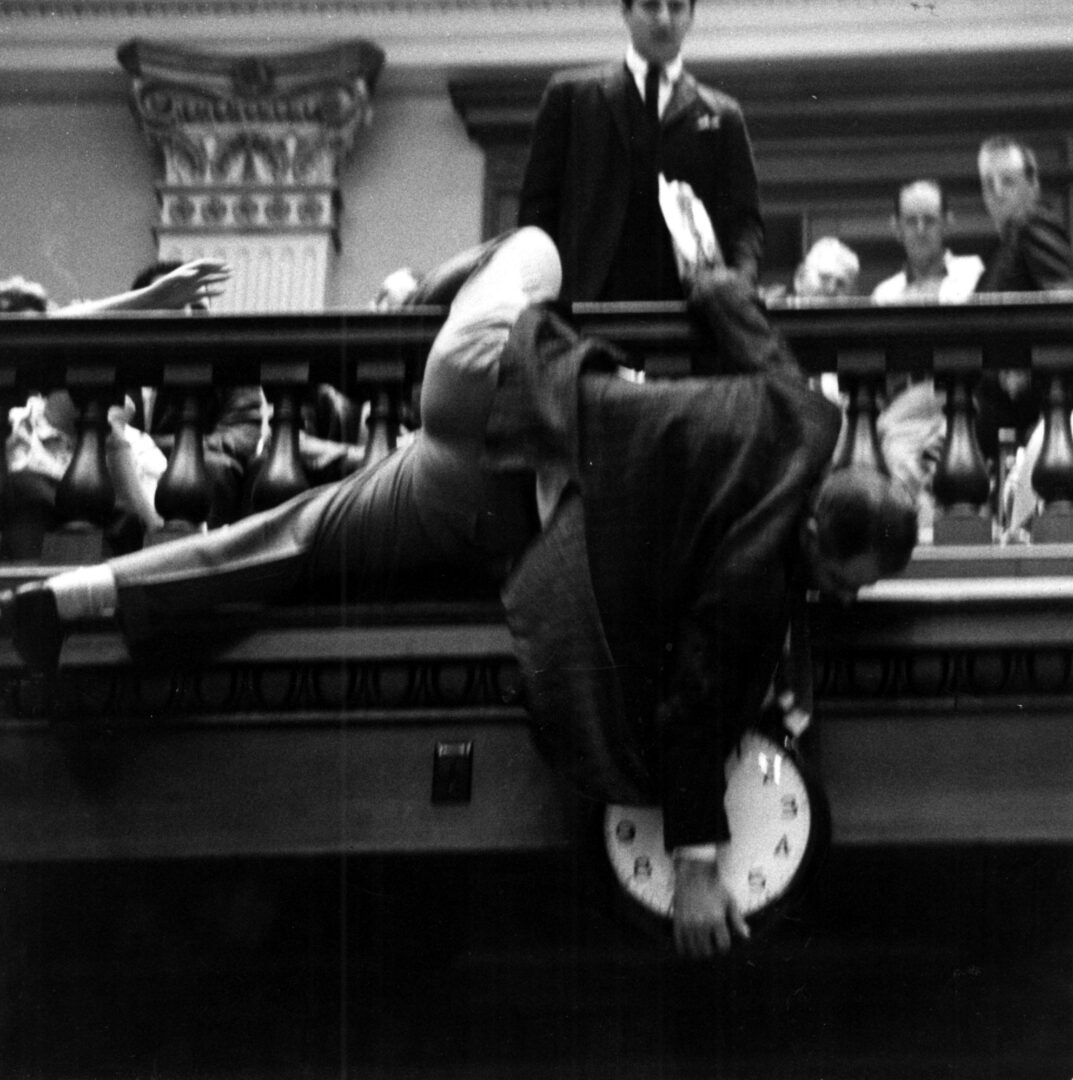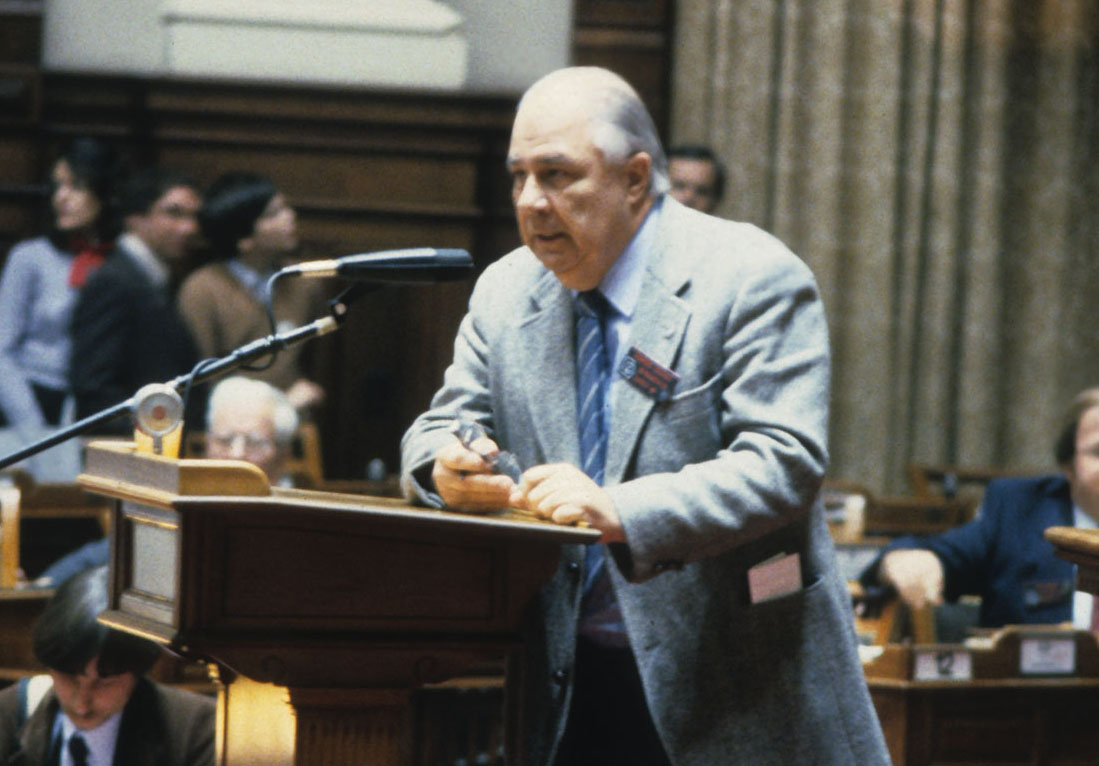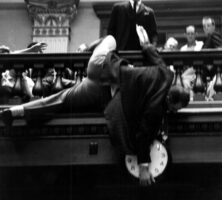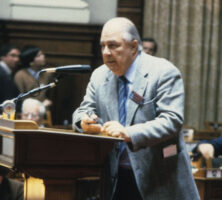Denmark Groover was a legislator from middle Georgia who was involved in some of the state’s most controversial political events, including two redesigns of the state flag and the creation of the state’s runoff election system.
Groover was born on June 30, 1922, in Quitman, Brooks County, to Mary Porter McCall and Denmark Groover Sr., who sold mules, watermelons, and insurance. Denmark Groover Jr. married four times and had seven children. He was a decorated marine pilot during World War II (1941-45), serving in the famed “Black Sheep Squadron” commanded by Major Gregory “Pappy” Boyington. He was named posthumously to the Georgia Aviation Hall of Fame in 2002.
Groover attended law school at the University of Georgia after the war and received his degree in 1948, setting the stage for a long career in both law and politics. He was elected to the state House of Representatives on four separate occasions—and later ousted from office by the voters each time for a variety of political and personal reasons. He represented house districts from Bibb County or Jones County across five decades: 1953-57, 1963-65, 1971-75, and 1983-95.
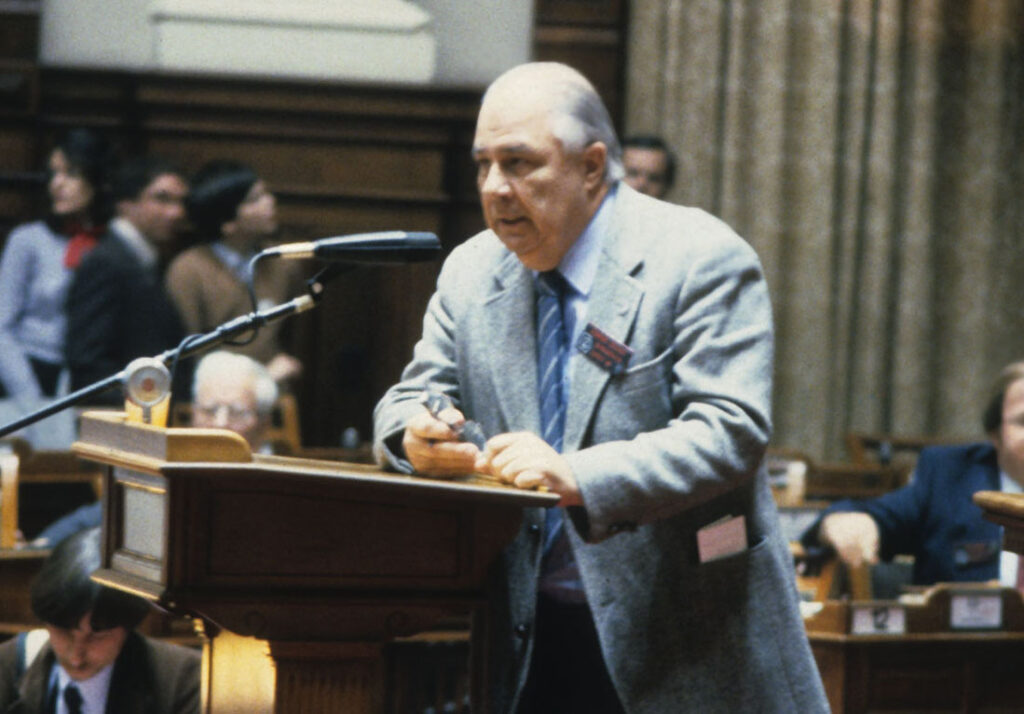
He was considered one of the shrewdest members of the General Assembly because of his prodigious memory for legislation. During his years as a lawmaker, Groover would arrive at the capitol early in the morning and read the text of every bill that had been introduced. He could quickly detect the flaws in a bill that would result in its being declared unconstitutional—or craft amendments to the bill that would make it impossible to pass.
Former governor Zell Miller said, “In my forty years around the capitol, I have never known a more effective legislator. When he 'Grooverized’ a bill, it was either totally without defect or full of defect, whichever was his goal.”
Whether he was in or out of the legislature, Groover’s law practice flourished because of his courtroom skills. Representing state senator Culver Kidd in a 1978 federal gambling trial, Groover cross-examined the president of the United States, Jimmy Carter, in videotaped testimony that was used in the trial. Kidd was acquitted of charges that he conspired to protect a gambling operation despite Carter’s testimony against him.
An unrepentant segregationist, Groover was closely involved in several notorious events that still have an impact on state politics today. Losing narrowly in 1958 to another white candidate that won overwhelming support from African American voters, Groover sought to end the potential of a minority “bloc” to elect state officials by a plurality. During his second stint in the legislature, he introduced a measure that necessitated a runoff election when no candidate for state office won an outright majority. Groover guided the measure successfully through one chamber of the legislature, but it was not enacted until a later revamp of the state’s election laws.
Groover also opposed a congressional redistricting bill that would swing power toward the state’s diverse urban centers. On the last day of the 1964 legislative session, as the house was debating the bill, Groover hung from the railing of the house visitors’ gallery and tried to stop the clock on the wall before it reached midnight and signaled the formal end of the session. As the clock crashed to the floor of the house chamber, a photographer snapped a picture of Groover hanging from the gallery that was printed in newspapers around the country and became an iconic image of Georgia politics.
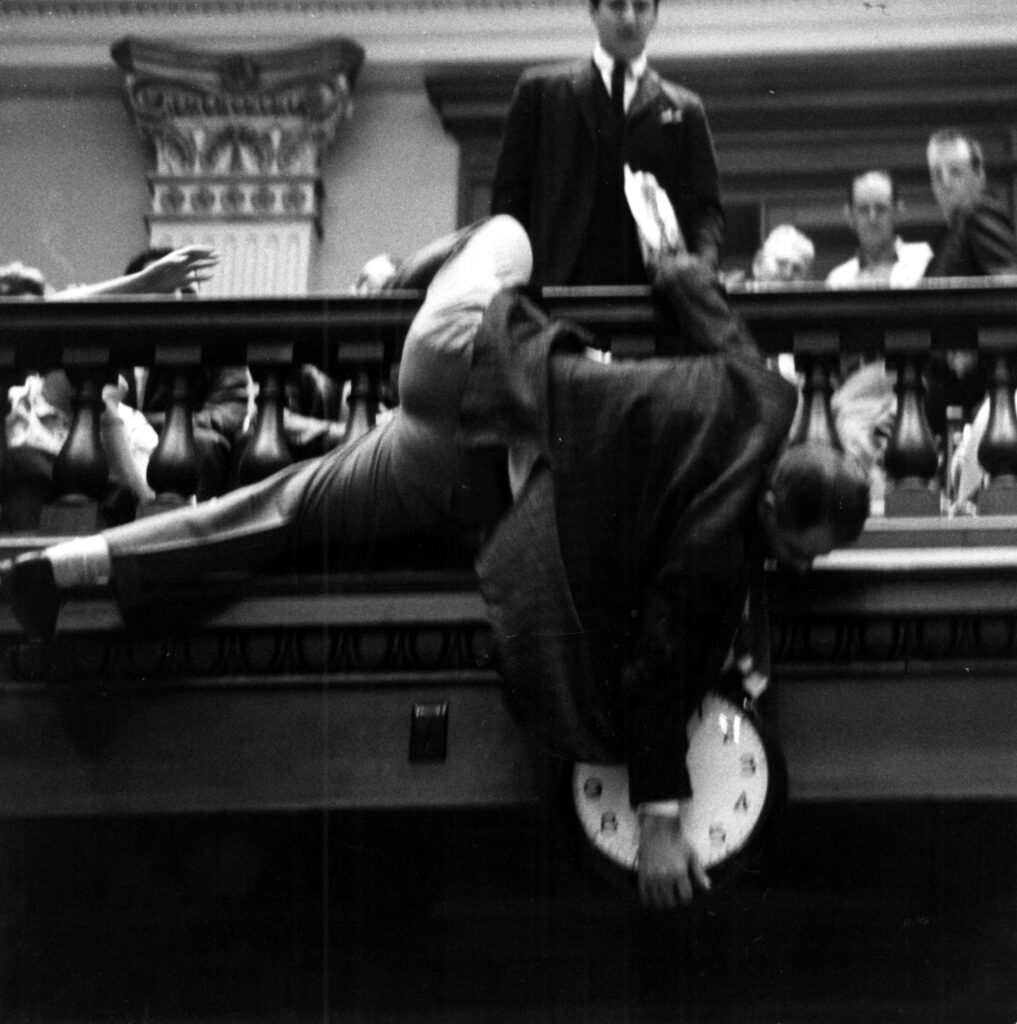
Groover launched another controversy in 1956 Groover as the house floor leader for Governor Marvin Griffin who helped pass the bill that changed the state flag to include the Confederate battle emblem. That change in the flag, Groover acknowledged later, was a defiant response to federal court decisions striking down racially segregated schools. As segregation diminished in Georgia, the Confederate flag design became a sore point with Black voters and business leaders. Governor Zell Miller tried to change the state flag in the early 1990s but could not overcome massive resistance among conservative white lawmakers.
When Governor Roy Barnes made another attempt to change the flag in 2001, he enlisted the support of Groover, who was seventy-eight years old and dying of heart problems. On the day that a bill was introduced to change the flag design, Groover made a dramatic appearance before the House Rules Committee to urge adoption. “It has become the most divisive issue on the political spectrum and needs to be put to rest,” he said. “It would bring to an end this cauldron of discord that adversely affects our lives and the future of our children and grandchildren.” The bill passed and the flag design was changed, although the resulting controversy would mean Barnes’s defeat when he ran again for governor in 2002.
Groover died less than three months after that last, dramatic political appearance in support of a new state flag, on April 18, 2001.


